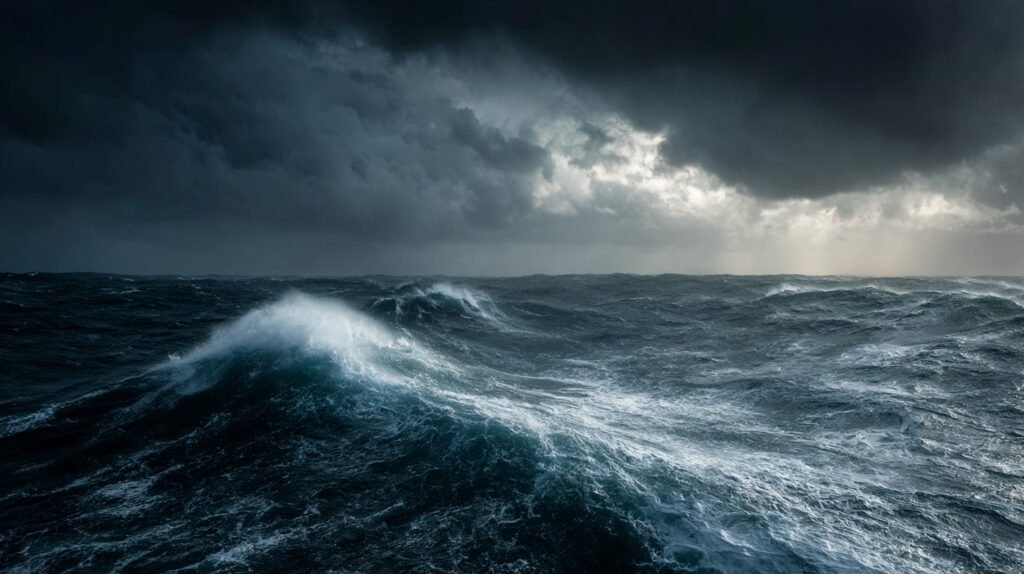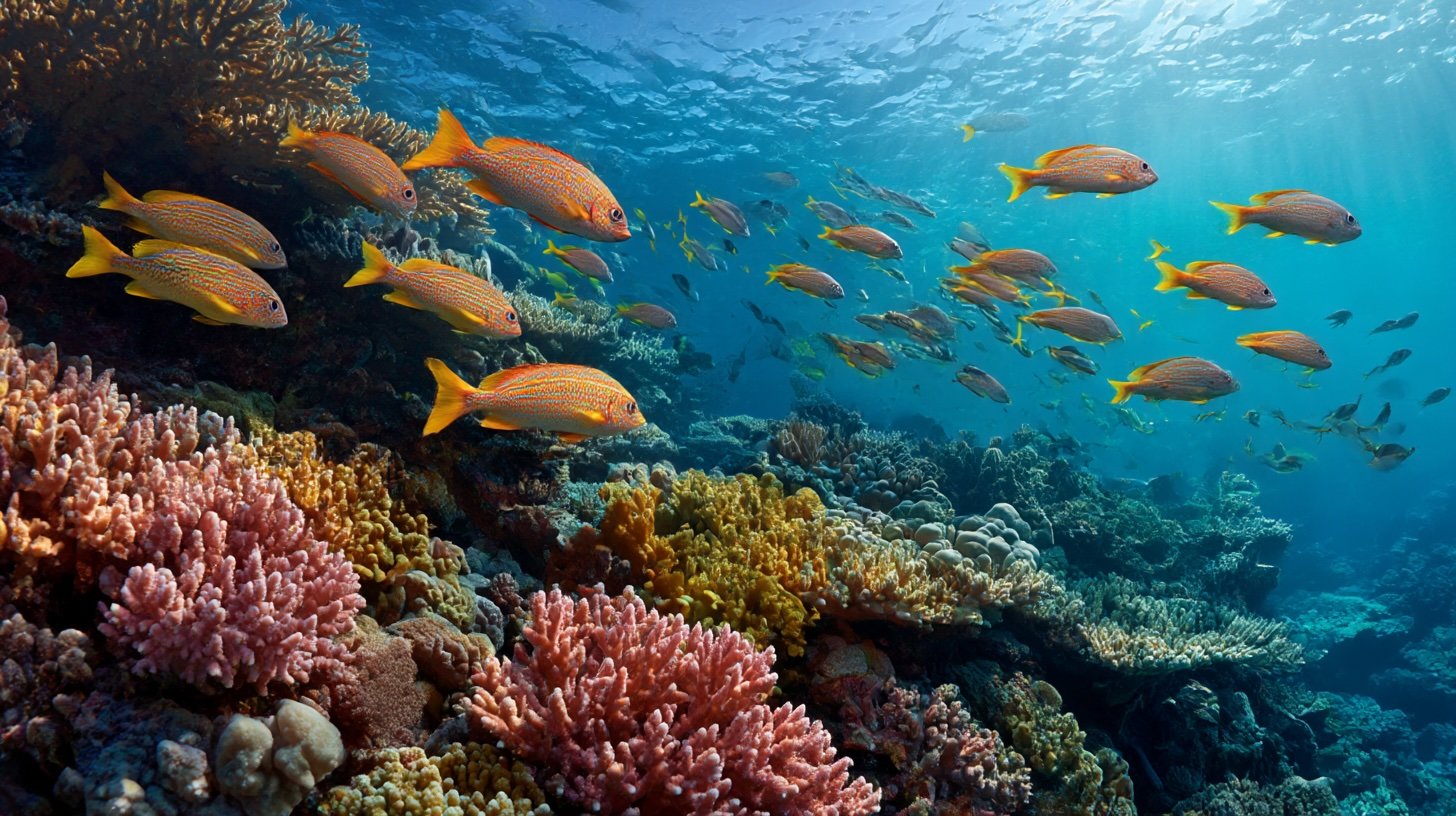World Oceans Day: A Love Letter to the Big Blue Mess
World Oceans Day (8 June) is that annual moment when we all collectively remember that, oh right, the planet is mostly water and we might want to stop treating it like a cosmic bin. Somewhere between the beach selfies and questionable seafood platters, the oceans quietly go about being the lungs of the Earth, the world’s largest museum of strange creatures, and possibly the only place where the phrase “blobfish” makes sense.
It covers over 70% of Earth’s surface and contains 97% of its water. Not to alarm you, but we know more about the surface of Mars than we do about the bottom of the ocean. That’s not poetic hyperbole. We’ve mapped about 20% of the ocean floor, and the rest remains a squiggly blue mystery. It’s not just what lives there, it’s what the sea hides—sunken cities, wartime wrecks, golden galleons, and very possibly Atlantis (or at least a fancy underwater Roman villa).
Then there’s the matter of the creatures. Every time someone takes a deeper dive in a submersible, a new animal shows up looking like it escaped from a Tim Burton storyboard. The yeti crab, for example. This absurdly fluffy crustacean grows its own bacteria in its hairy claws to detoxify the volcanic water it lives in. It looks like a disco mop and couldn’t care less what you think.
The ocean is Earth’s largest carbon sink, absorbing around a quarter of the carbon dioxide humans emit each year. Without it, climate change would’ve slammed us like a brick through a greenhouse long ago. And just to keep you awake at night, the ocean also sucks up 90% of the excess heat we create. It’s basically doing all the work of a planet-sized air conditioning unit, with no thanks and frequent oil spills.

The average depth of the ocean is around 3.7 kilometres. In some places, it dips far deeper. The Mariana Trench goes down nearly 11 kilometres—that’s deeper than Mount Everest is tall. If you dropped the mountain in there, you’d still have room for a helicopter landing pad at the top.
The ocean also talks—if you have the right ears. Whales sing. Some fish grunt. Shrimp snap so loudly they can stun prey. In fact, the ocean can be thunderously noisy thanks to natural and human-made sounds, but most of us would never guess it. It’s like a giant underwater rave that we’re not invited to.
Seagrass, often overlooked in favour of flashier coral reefs, is a miracle plant. It soaks up carbon 35 times faster than a rainforest. It’s also the marine equivalent of a maternity ward, sheltering baby fish until they’re tough enough to deal with the big blue world.
Speaking of coral, they’re animals. Not rocks, not plants—actual colonies of tiny creatures. And when they get stressed out (usually from too much heat), they bleach. It’s not a fashion statement; it’s more like a last gasp. Over 50% of the world’s coral reefs are already dead or dying. Imagine if your street vanished one day and no one seemed bothered.
Mangroves are like nature’s Swiss Army knife. They prevent erosion, act as storm buffers, filter water, and nurture fish nurseries. Oh, and they can literally breathe through their roots. Some even grow in saltwater and excrete the salt like a hungover sea wizard.

Sargassum, the floating seaweed mat in the middle of the Atlantic, is home to its own unique ecosystem. It doesn’t attach to the seabed, it just drifts—a floating, golden forest complete with baby turtles, fish, crabs, and all manner of drifting drama. Occasionally it drifts too much and washes up on beaches in vast, smelly carpets, but at sea, it’s a nursery of dreams.
Phytoplankton are microscopic, plant-like organisms that do most of the heavy lifting in producing Earth’s oxygen. Every second breath you take? Thank the plankton. If they ever unionised, we’d all be in trouble.
The tides are controlled by the moon’s gravitational pull. Which means your favourite beach disappearing twice a day is cosmic choreography. It’s not the sea being indecisive, it’s astronomy.
Underwater rivers exist. In places like the Black Sea or beneath the Amazon Delta, denser, sediment-laden water flows like rivers at the bottom of the ocean. It’s like Inception, but with saltwater and physics.
In some deep-sea zones, creatures rely on chemosynthesis instead of photosynthesis. That means they use chemicals like hydrogen sulfide to create energy. No sunlight. No problem. Nature, once again, makes MacGyver look lazy.
Octopuses are the closest thing we have to alien intelligence. Three hearts, blue blood, and the ability to squeeze through holes the size of coins. They taste with their arms and seem to solve puzzles with alarming speed. Some scientists say they might even dream. One day, they’ll rise. Be nice now.
The Bermuda Triangle sits in the Atlantic Ocean, between Miami, Bermuda and Puerto Rico. Countless ships and planes have disappeared there under “mysterious” circumstances. Is it weather, magnetic anomalies, or just bad luck? No one agrees. It’s the ocean’s own conspiracy theory lounge.
The Great Pacific Garbage Patch is a floating vortex of plastic and waste twice the size of Texas. It’s not an island you can stand on, more like a grim soup of microplastics. The ocean swirls it together in a gyre, like the worst smoothie ever made.
There’s a lake under the sea. Off the coast of the Yucatan Peninsula lies Cenote Angelita, where hydrogen sulfide creates a dense underwater river. Divers descend into it like ghosts through fog. It’s haunting and wildly cinematic.
Ships still use the oceans for 90% of global trade. That banana you had this morning probably travelled halfway around the world on a container ship. The ocean isn’t just blue space; it’s the global motorway.
In the Arctic and Antarctic, melting ice sheets are revealing ancient fossils, unknown ecosystems, and, predictably, the consequences of climate change. As sea levels rise, so does our collective anxiety.
Bioluminescence is the ocean’s own disco light show. Some fish, squid, and jellyfish glow in the dark thanks to chemical reactions in their bodies. It’s not just pretty—they use it to hunt, hide, and flirt. Underwater Tinder, but luminous.
Some deep-sea fish have evolved eyes the size of ping-pong balls to detect the faintest glimmer of light. Others have gone the opposite route and abandoned eyes entirely. When you’re 3,000 metres down, vision becomes optional.
There are volcanoes under the sea. Around 80% of the Earth’s volcanic activity happens beneath the ocean surface. Some of these underwater eruptions create new islands. Others just boil the sea in private.
The ocean has seasons too. Currents shift, temperatures rise and fall, and animals migrate accordingly. It’s not just one big wet lump. It changes, pulses, breathes.
And finally, let’s not forget the sheer poetry of shipwrecks. They become coral reefs, museums, cautionary tales, and occasionally treasure hunts. Every wreck tells a story, frozen in salt and time.
So on the World Oceans Day, maybe skip the plastic straw, eat something that didn’t nearly go extinct to land on your plate, and thank the sea for its endless generosity. It puts up with a lot and still manages to dazzle us. Not bad for a body of water with commitment issues and the occasional kraken rumour.
